Orson Welles’ “Citizen Kane” is one of the most beloved films of all time. Definitely dissected more times than you could say “rosebud” in a sentence, its timeless quality was arguably ahead of its time with themes of absolute power providing generations with countless conversations. As a matter of fact, some consider “Citizen Kane” to be the greatest film ever made.
Nevertheless, did you know that behind all that glory, in the back of all that acclaim, was a wrestle for the authorship of its screenplay? Yup, it was a battle that broiled for ages, one that never really faded till death took one party away. Indeed, that’s what David Fincher’s latest feature, “Mank”, attempts to deliver: the story behind the greatest film ever made.
So, does “Mank” drop the tank or take it to the bank? Let’s take a look!
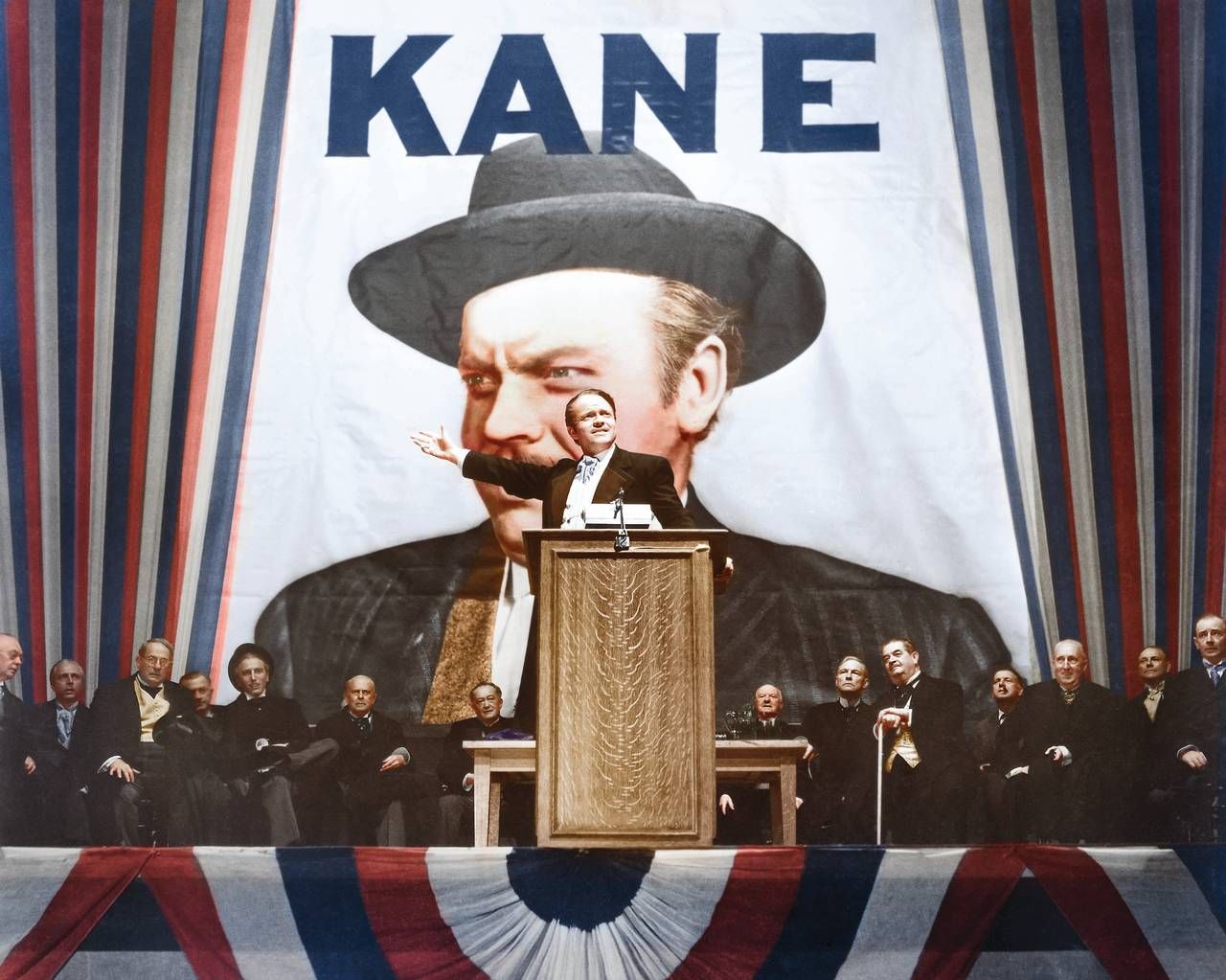
The film takes place in the 1930s, when playwright Herman J Mankiewicz (Gary Oldman), informally known as Mank to his friends and associates, is involved in a car accident. That little spinout takes him out of the game but soon Orson Welles and his booming presence enter the frame to offer Mank an incredulously speedy script gig. And… the rest is history.
Director David Fincher had initially planned to make this film back in the 90s, with notable performers such as Kevin Spacey and Jodie Foster attached to the project. However, it never got off the ground due to Fincher’s adamant stance that the film was to harken back to its monochrome roots. Also of note is that the screenplay was written by Fincher’s father, Jack, who passed away in 2003. As such, “Mank” is a deeply personal project for Fincher.
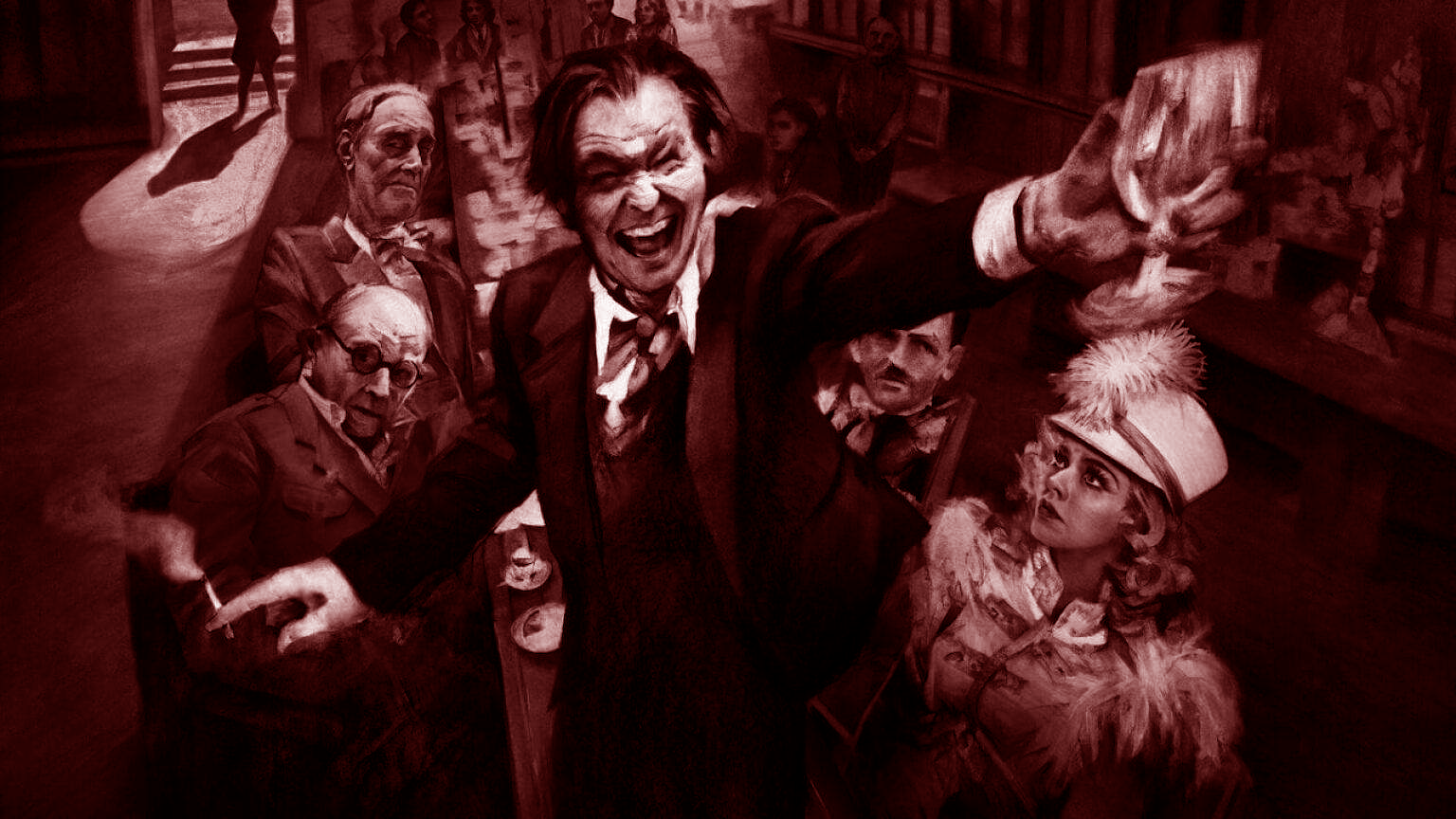
Much work was placed into making sure that the visual aesthetic of the film compared to that of a feature from the 1930s. Undoubtedly, Fincher and crew actively placed a great deal of effort into recreating the rich monotones of the classics. Everything from the sound, music, and filmmaking style is embellished with that old-school flair, with many techniques being utilised from that era. As a matter of fact, the composers of “Mank” only used period-authentic instruments to recreate a score reminiscent of “Citizen Kane”.
We found one detail particularly interesting whereby cue marks aka cigarette burns were inserted. Yes, it is an old technique used as a marker to signal to the projectionist that the scene was ending. However, what struck gold was the writing of the scene which utilised the effect as a meta-reference to the dialogue.
Furthermore, if you’ve watched Fincher’s other masterpiece, “Fight Club”, The Narrator explains the device in detail. So, if you want more information, do watch “Fight Club” because we are good souls and we do not talk about “Fight Club” here.

“Mank” is not for everyone, indeed. It can be said that the level of enjoyment or appreciation of this film may vary according to how well-versed one is with the backstory of “Citizen Kane”. To some, this might be some random monochrome picture that Netflix put out in order to bow to the fancies of Hollywood, or as the film puts it, acting as a proverbial “organ grinder’s monkey”. It really isn’t all that interesting if you weren’t invested in cinema and Tinseltown’s history in the first place.
Besides, if you’re expecting some kind of neo-noir psychological enigma like “Se7en”, you’re not going to get that. Probably the closest to “Mank” would be the 2010 film, “The Social Network”, which dealt with a similar struggle for dominance within the creation of a billion-dollar idea called Facebook. Yet, the similarities end there as “Mank” leans more into its own era and appreciation of the classic period. It is a unique, independent voice of its own, one that is distinctive from the rest of Fincher’s works.
While we would not call it a companion piece to “Citizen Kane” – not everything revolves around the controversial authorship battle, a certain degree of familiarity or awareness is needed to fully grasp why certain characters behave in certain ways. Why was this character so important to Mank and to his work? Why are certain scenes so stylistically filmed? “Mank” ties these up into little bundles within its nonlinear screenplay, delivering them to the audience in little envelopes one at a time which may further confuse the casual audience member.
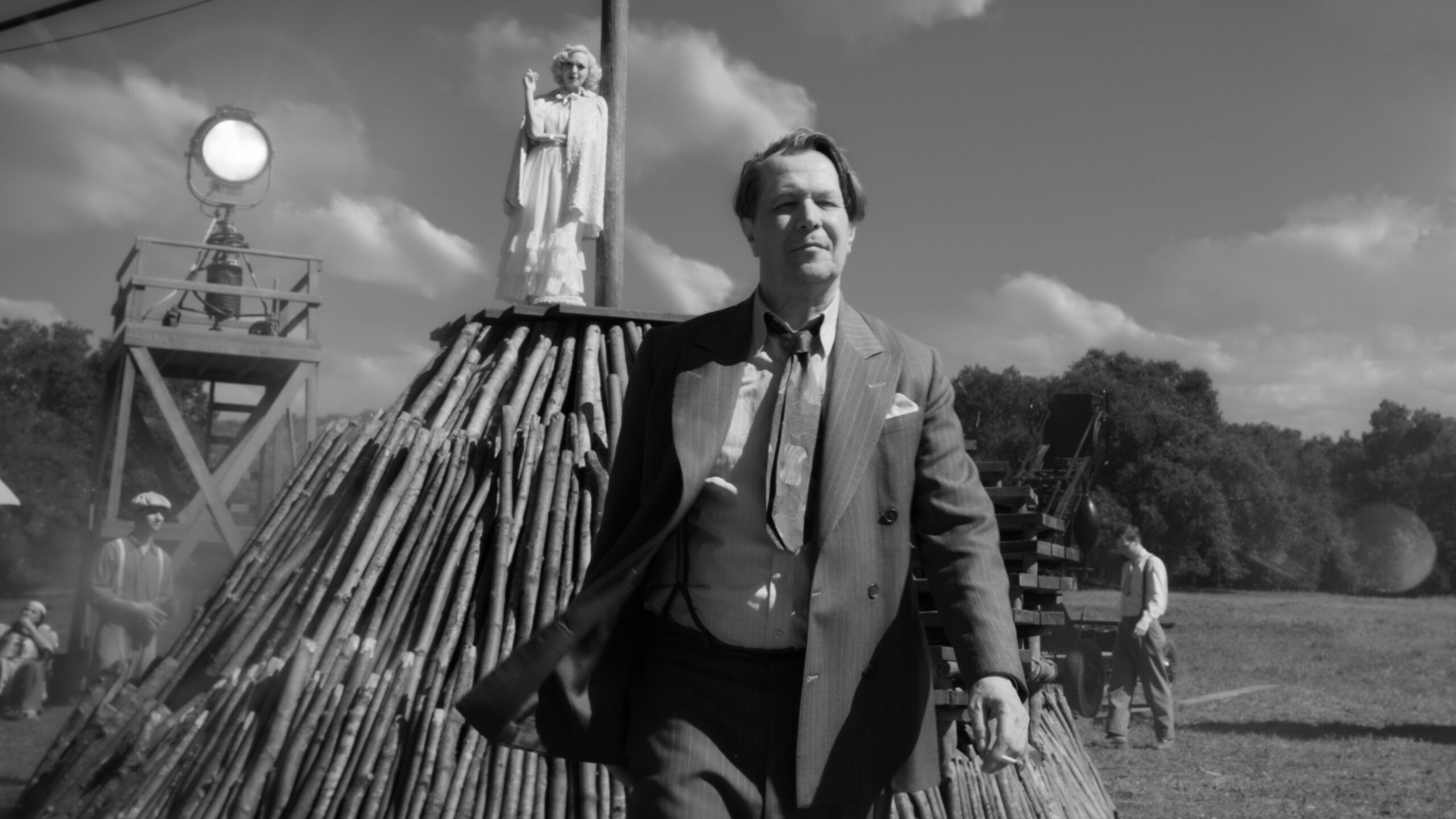
While we could say that not everyone will enjoy this flick in the same manner, it is with an undisputable assuredness that one may rejoice in Gary Oldman’s performance.
In “Mank”, Oldman commands every single scene he is in with ease. From his liquor-fuelled monologues to his passion-filled cackles, the actor is at his very best. Mind you, half of the time, Oldman is throwing his weight while on a soft, comfy white bed. The drunken stupor as he awakes to answer a call is ever entertaining. As he struts the streets of Los Angeles, his character is given a range of both giddy joy and emotional turmoil as he allows his personal demon in a bottle to consume him and his work.
Gary Oldman is a tour-de-force with his performance as the titular character. There’s no doubt about that. There’s a reason why he’s an Academy Award-winning actor, and he displays that in a very drunken monologue at the climax, delivering each line with increasingly heightened passion just before the cake explodes. It is without a doubt, that Oldman displays why he’s one of Hollywood’s finest yet again in “Mank”.
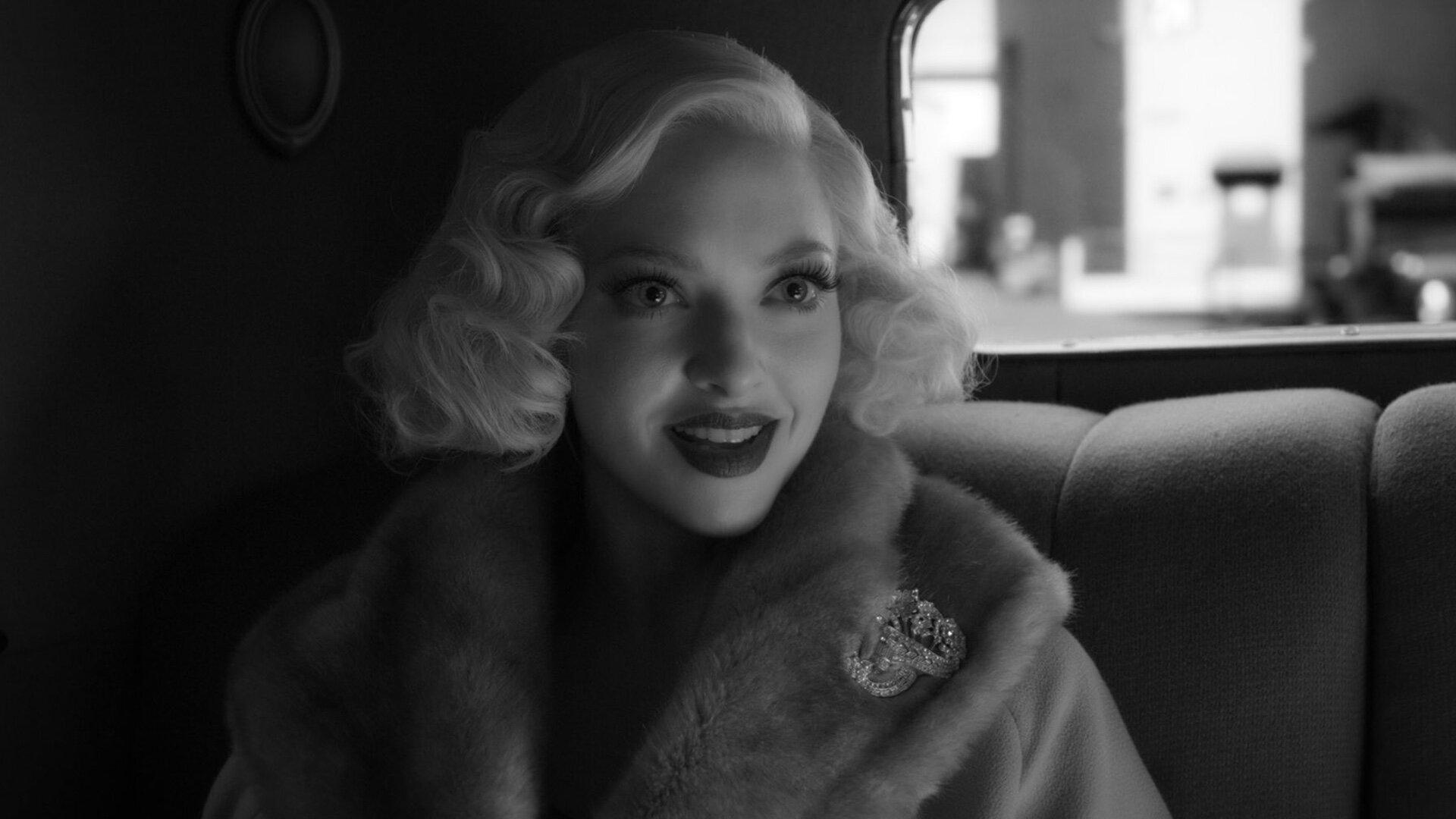
Amanda Seyfried is also excellent in her role as actress Marion Davies, the wife of newspaper publisher William Hearst (Charles Dance), who was part of the inspiration for Welles’ character in “Citizen Kane”. Seyfried is at her dramatic best as her wide-eyed visage provides Davies with a shimmering contrast to Oldman’s Mank. She delights her way throughout the script as the main crux to a conflicted character, one who is caught in the middle of a war.
If there is a weak link within the performances, we probably might have to pick on Tom Burke’s representation of Orson Welles. While absolutely fine in certain scenes, it did not feel all that consistent in the latter part of the film. Burke’s position and tone of assertion were a little staler in comparison to where he was at the start. Again, this is a nitpick, because Mr Burke had to live up to the legacy of the legend himself.
Nonetheless, every supporting character is woven into this script with ease as Hearst dances his way to politics, Welles plays within the shadows and Davies wrestles with her inner turmoil. Even Rita Alexander (Lilly Collins), Mank’s secretary is given a substantial arc whilst providing humourous assistance to her employer.
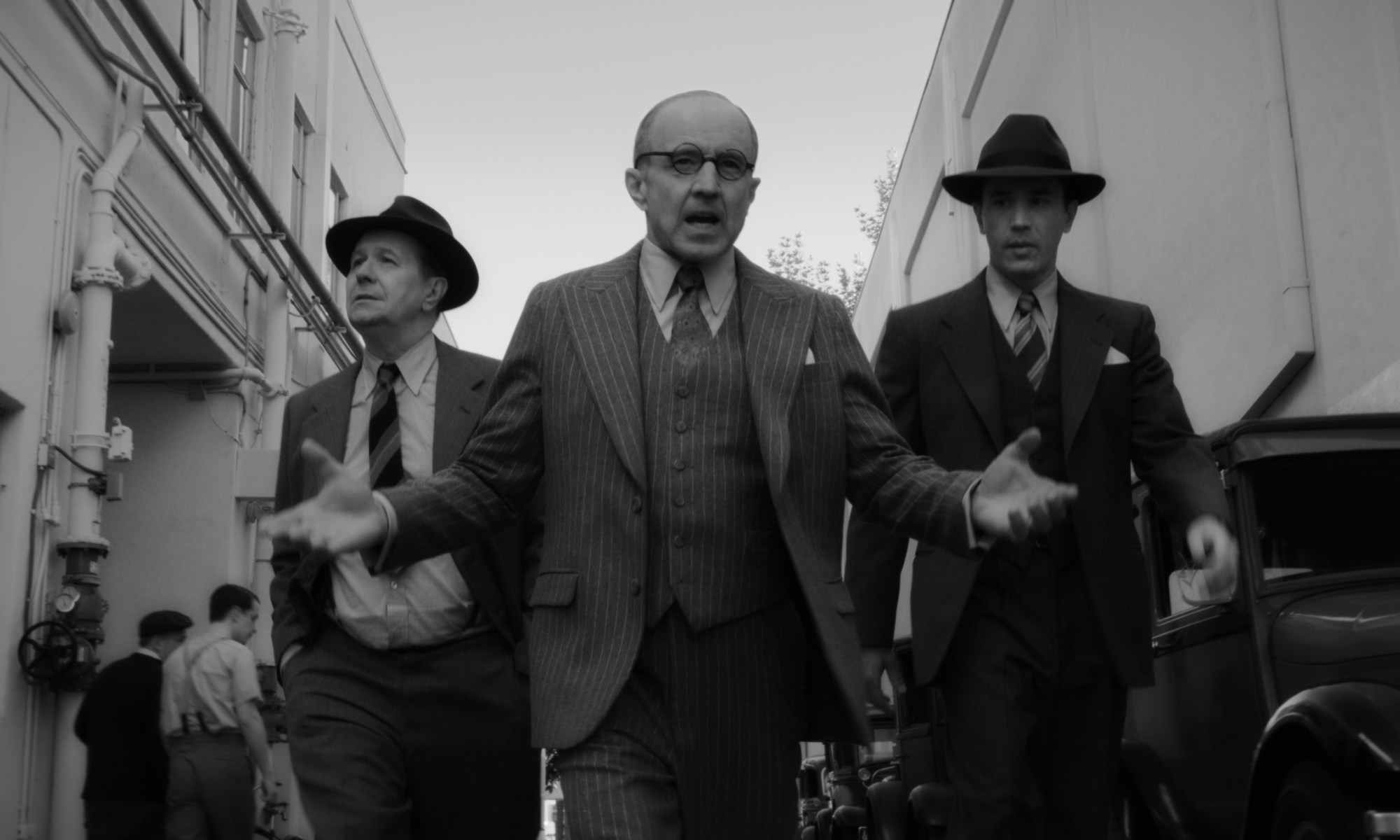
“Mank” is a tremendous collaborative piece of work from both father and son and there could be no better tribute to his dad than to finish the film with great attention to detail. Everything from the set design, sound, music, performances, and cinematography all revel in the period in which it was set. There’s no holding back when it comes to making sure that the viewer digests a time capsule, providing a visceral atmosphere and experience through the grains of film. This is cinema at its finest.
Man, what a triumph for David Fincher. Having left the feature game for six years, doing a little TV on the side, “Mank” certainly did right by himself with this film. We’re sure this will be an awards season contender, one that could allow Fincher and Netflix to reach for glory as Mankiewicz and Welles once did.

“Mank” is currently streaming on Netflix.
Follow us on Instagram, Facebook or Telegram for more updates and breaking news.


